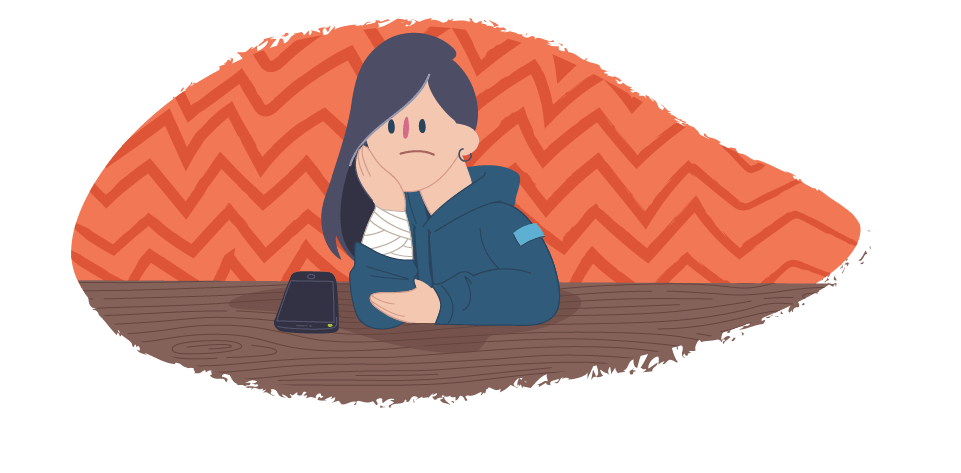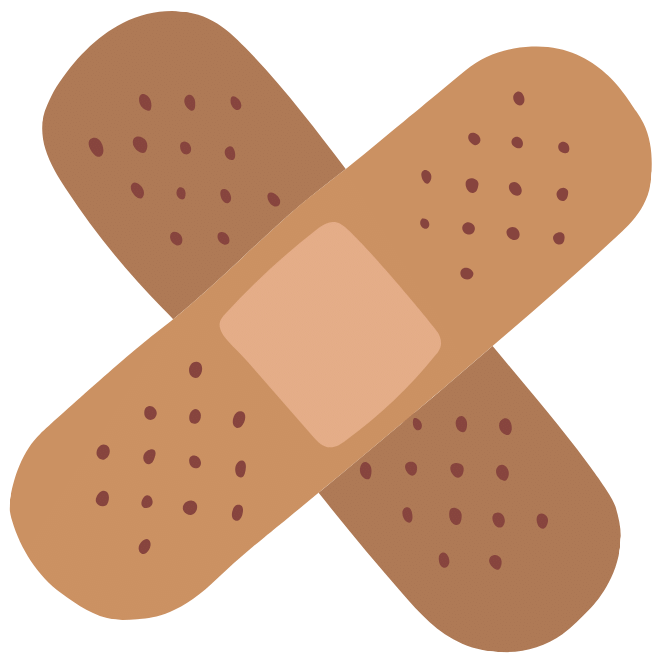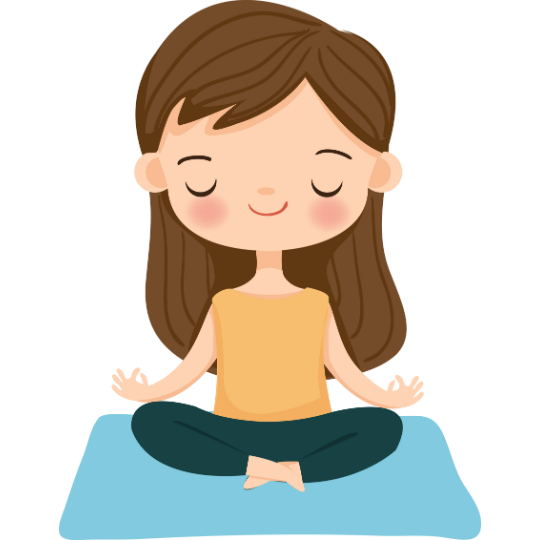Coping strategies
If you are feeling stressed, anxious or just struggling to deal, there ...
READ MESometimes people self-harm as a way to cope. Learn what self-harm is, why people self-harm, and what can help.
Content Warning: this article contains information about mental health which may be distressing or triggering.

Snap a rubber band around your wrist
Draw on yourself with a red texta
Pluck your brows/wax your leg hairs
Yell, or sing loudly
Fidget – snap sticks, tear apart papers, etc.
Write out/draw how you feel
Bite a hot chilli
Eat something really sour (like a lemon)
Rub an ice cube over where you’d normally self-injure
Try distraction techniques like going for a walk, having a shower, etc.
Your safety is the most important thing! If you are going to self-harm, try to do it at a time, place, or in a way where you can do the least damage (i.e., minimise the harm).
You can reduce harm and increase safety by being prepared. First, set yourself a limit and stay within that limit. Try to slow down the self-harm to help you stay in control. Think carefully about how and where you self-injure, e.g., avoid major blood vessels to prevent life-threatening injuries, or avoid parts of the body that are more likely to scar. Don’t self-injure while under the effects of alcohol or other drugs.
Make sure you clean/disinfect implements before you use them (to prevent infection). You can also plan for what you might need afterwards, such as having first aid materials/wound care items available and ready to use – such as bandages and antiseptic. And, most importantly, have a plan for getting medical aid if you go too far or things go wrong.

If you’re bleeding, apply pressure. If you have a burn, hold it under cold, slowly running water. Monitor yourself and your injuries.
Here are some signs you should seek medical attention:
After self-harming, be kind to yourself. Self-harm is a cycle that often includes guilt and shame after self-injuring. Things like guilt, shame, blame, etc., can actually make the self-harming cycle worse. Being compassionate to yourself can help reduce negative feelings and even slow down the urge build up (over time).
Reasons why people self-harm are really complicated, but can include things like:
Expressing anger
Relieve feelings of emptiness
A way to cope with overwhelming emotions
To express self-hatred or punish yourself
To feel a sense of control over your body or emotions
To distract yourself from trauma or emotional pain (with physical pain)
Self-harm can become a cycle. It starts with lower-level emotional suffering, that builds up to emotional distress. The urge to self-harm grows until the person self-harms. Straight after, people often feel a sense of relief. Self-harm can flood the body with endorphins which can feel a bit like a ‘high’ or a ‘rush’. After that, people often report feeling shame, blame, guilt or grief – which can start the cycle all over again. In this way, self-harm can be addictive.
Here are some things that can help:

Know your triggers. A trigger is a person, place, situation or thing that makes you feel distressed and/or overwhelmed. Triggers often act as a reminder of a past trauma. Triggers are very personal and can be anything – the sound of someone's voice, a smell, an anniversary of an event, etc. Knowing your triggers can sometimes help you avoid them. They also give you insight into yourself and help you be prepared, which can prevent self-harm and allow you to develop other coping strategies instead.

Manage stress. Intense, severe and overwhelming emotions can build up and make you want to self-harm for release and relief. Reducing, preventing and managing stress can slow down the build-up or even prevent/stop it. It’s not always possible to get rid of stress entirely – but doing things that help you look after yourself and de-stress can make a big difference. These might include things like making sure you get enough sleep or spending time doing things that make you feel calm.

Get support to work on ‘core issues’. Self-harm is often a coping strategy. Working with a professional on any underlying thoughts, feelings or experiences that ‘feed’ into the self-harm cycle can help you better manage these. Some people can even find that their urge to self-harm goes away with professional mental health treatment for things that cause emotional distress (like depression or anxiety).

Develop other coping strategies. Trying to go ‘cold turkey’ with self-harm can be really tough. Instead, replacing self-harm with other coping strategies can increase the changes of being able to stop self-harming over time.
If you’ve noticed the signs (like seen an injury), rather than them telling you about it, it can be hard to know what to do or say. The most important thing is to show care and concern – people who self-harm normally feeling vulnerable, ashamed or guilty. They really need kindness and compassion.
If talking about it, or supporting someone who self-harms, it’s important to stay calm. The person you’re talking to might be feeling emotional distress – and if things get too heated or overwhelming, they might shut down.
Remember to be curious and ask questions (and listen) to understand. There’s a lot of shame and stigma around self-harm, which means people can find it hard to talk about.
When it comes to next steps, don’t worry about having to ‘solve’ the problem – just listening is the most important thing you can do. Try and connect them with a professional support (e.g., you can call Kids Helpline together). Get educated about self-harm so you can be a longer-term support. You can help them make a safety plan (other things they can try to cope when they have the urge to harm) - and be patient. Managing self-harm takes time.
Myth:
People who self-harm just want attention.
Fact:
Many people who self-harm keep it a secret for lots of reasons, including:

Myth:
People who self-harm are suicidal
Fact:
Some people who self-harm are also suicidal, but many people who self-harm are not suicidal. In fact, some people use self-harm as a way to stay safe when they are having thoughts of suicide.

Myth:
People who self-harm are punishing themselves.
Fact:
Some people may self-harm to punish themselves. Many people who self-harm are using it as a way to try and cope when they are feeling distressed and depressed.

Myth:
If you tell a Kids Helpline counsellor you are self-harming, they will try to make you stop.
Fact:
Your safety is really important, so a counsellor will always focus on helping you to stay safe. Counselling also focuses on overcoming the deeper concerns that may play a role in self-harm which can help people overcome it or find other ways of coping.

Myth:
If you tell a Kids Helpline counsellor you are self-harming, they will tell your parents.
Fact:
In most cases, telling us you are self-harming is something that can stay private/confidential. The only time we might need to tell someone about your self-harm is in a life-threatening emergency.
You might be feeling scared or embarrassed to ask for help, but talking to someone about what you’re going through can really help.
We're here to talk about anything. Give us a call or start a WebChat with us today.
If you are looking for more digital services and resources, check out Head to Health.
Coping strategies
If you are feeling stressed, anxious or just struggling to deal, there ...
READ MEI'm thinking about suicide
When people have overwhelming feelings of wanting to end their life it ...
READ MEAll about depression
Depression is more than just feeling sad. It's a mixture of thoughts, ...
READ MECoping strategies: As told by you!
We hand the mic over to you to share the coping strategies ...
READ ME
Talking helps! We’re here for you.
No problem is too big or too small.
We're here 24 hours a day, 7 days a week